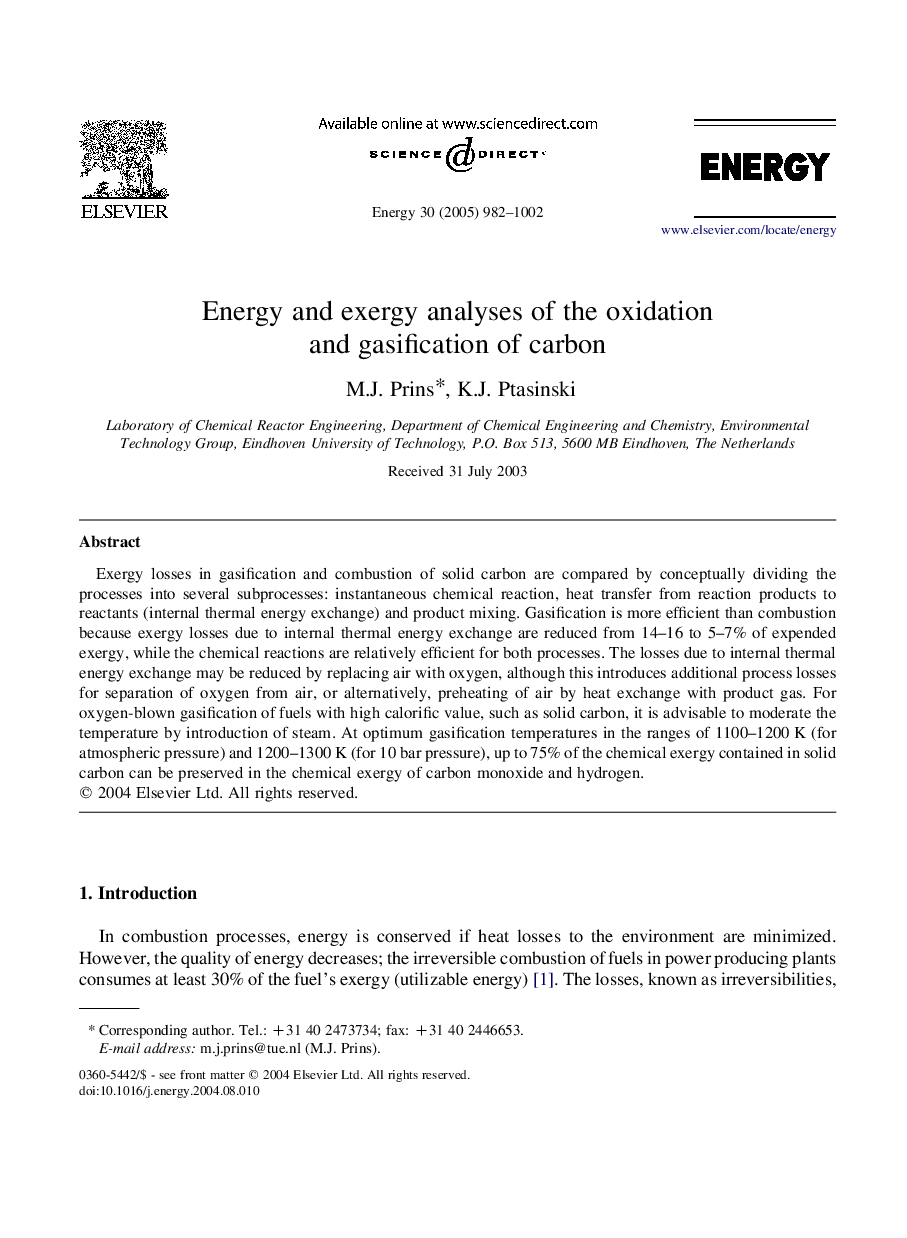| Article ID | Journal | Published Year | Pages | File Type |
|---|---|---|---|---|
| 10682900 | Energy | 2005 | 21 Pages |
Abstract
Exergy losses in gasification and combustion of solid carbon are compared by conceptually dividing the processes into several subprocesses: instantaneous chemical reaction, heat transfer from reaction products to reactants (internal thermal energy exchange) and product mixing. Gasification is more efficient than combustion because exergy losses due to internal thermal energy exchange are reduced from 14-16 to 5-7% of expended exergy, while the chemical reactions are relatively efficient for both processes. The losses due to internal thermal energy exchange may be reduced by replacing air with oxygen, although this introduces additional process losses for separation of oxygen from air, or alternatively, preheating of air by heat exchange with product gas. For oxygen-blown gasification of fuels with high calorific value, such as solid carbon, it is advisable to moderate the temperature by introduction of steam. At optimum gasification temperatures in the ranges of 1100-1200Â K (for atmospheric pressure) and 1200-1300Â K (for 10Â bar pressure), up to 75% of the chemical exergy contained in solid carbon can be preserved in the chemical exergy of carbon monoxide and hydrogen.
Related Topics
Physical Sciences and Engineering
Energy
Energy (General)
Authors
M.J. Prins, K.J. Ptasinski,
